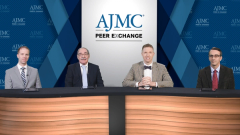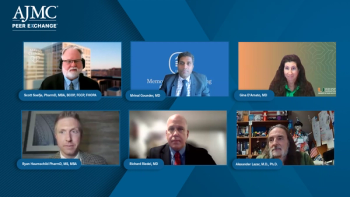
Future Possibilities for Step Therapy in IgA Nephropathy Treatment
Panelists discuss how step-therapy for immunoglobulin A (IgA) nephropathy is evolving toward a more personalized approach, starting with optimized supportive care before progressing to targeted therapies based on risk stratification, disease characteristics, and biomarker profiles.
Episodes in this series

Evolving Step-Therapy Approaches in IgA Nephropathy Management
Anticipated Treatment Algorithm Evolution
As targeted therapies enter clinical practice, the traditional step-therapy approach for IgA nephropathy (IgAN) is likely to evolve toward a more personalized, mechanism-based framework:
Initial Risk Stratification and Baseline Therapy
- All patients: Optimized supportive care with maximal tolerated renin-angiotensin-aldosterone system (RAAS) blockade and SGLT2 inhibitors as foundation therapy
- Risk assessment: Comprehensive evaluation using proteinuria levels, estimated glomerular filtration rate (eGFR), blood pressure, and histopathologic features (MEST-C)
- Biomarker profiling: Where available, assessment of galactose-deficient IgA1 levels, autoantibodies, and complement activation markers
Anticipated Step-Therapy Framework
Step 1: Supportive Care Optimization (3-6 months)
- Maximal tolerated RAAS inhibition
- Addition of SGLT2 inhibitors
- Comprehensive lifestyle modifications and cardiovascular risk management
Step 2: Risk-Stratified Therapeutic Escalation
- Low-risk patients (proteinuria < 1g/day, stable eGFR):
- Continue optimized supportive care with monitoring
- Moderate-risk patients (proteinuria 1-3 g/day despite supportive care):
- First escalation: APRIL/BAFF inhibitors (sibeprenlimab, povetacicept)
- Alternative first escalation: Targeted enteric-release budesonide
- High-risk patients (nephrotic-range proteinuria, rapid eGFR decline):
- First escalation: Combination of short-course systemic steroids with targeted therapy
- Mechanism-driven selection: Match therapy to dominant pathophysiologic feature
Step 3: Response Assessment and Adjustment (3-6 months)
- Adequate response (≥ 30% proteinuria reduction, stable eGFR):
- Continue effective therapy with potential dose optimization
- Partial response (15%-30% proteinuria reduction):
- Augmentation strategy: Add complementary mechanism agent
- Example: Add complement inhibitor to APRIL inhibitor therapy
- Inadequate response (< 15% proteinuria reduction, declining eGFR):
- Switch strategy: Change to alternative pathway inhibitor
- Intensification: Consider multitargeted approach addressing multiple hits
Step 4: Long-term Management
- Responders: Potential trial of extended-interval dosing or dose reduction
- Persistent active disease: Continuous therapy with periodic reassessment
- Progressive disease: Consider combination approaches targeting multiple pathways
Anticipated Refinements
The step-therapy approach will likely evolve to incorporate:
- Biomarker-guided therapy selection: Matching treatment to dominant pathogenic mechanism
- Combination approaches: Rationally designed multiagent regimens targeting different hits
- Predictive algorithms: Using baseline characteristics to determine optimal therapeutic sequence
- Duration optimization: Personalized decisions on treatment continuation vs withdrawal
This framework represents the anticipated evolution of IgAN management as experience with targeted therapies grows and biomarker-based patient stratification becomes more sophisticated.
Newsletter
Stay ahead of policy, cost, and value—subscribe to AJMC for expert insights at the intersection of clinical care and health economics.









































